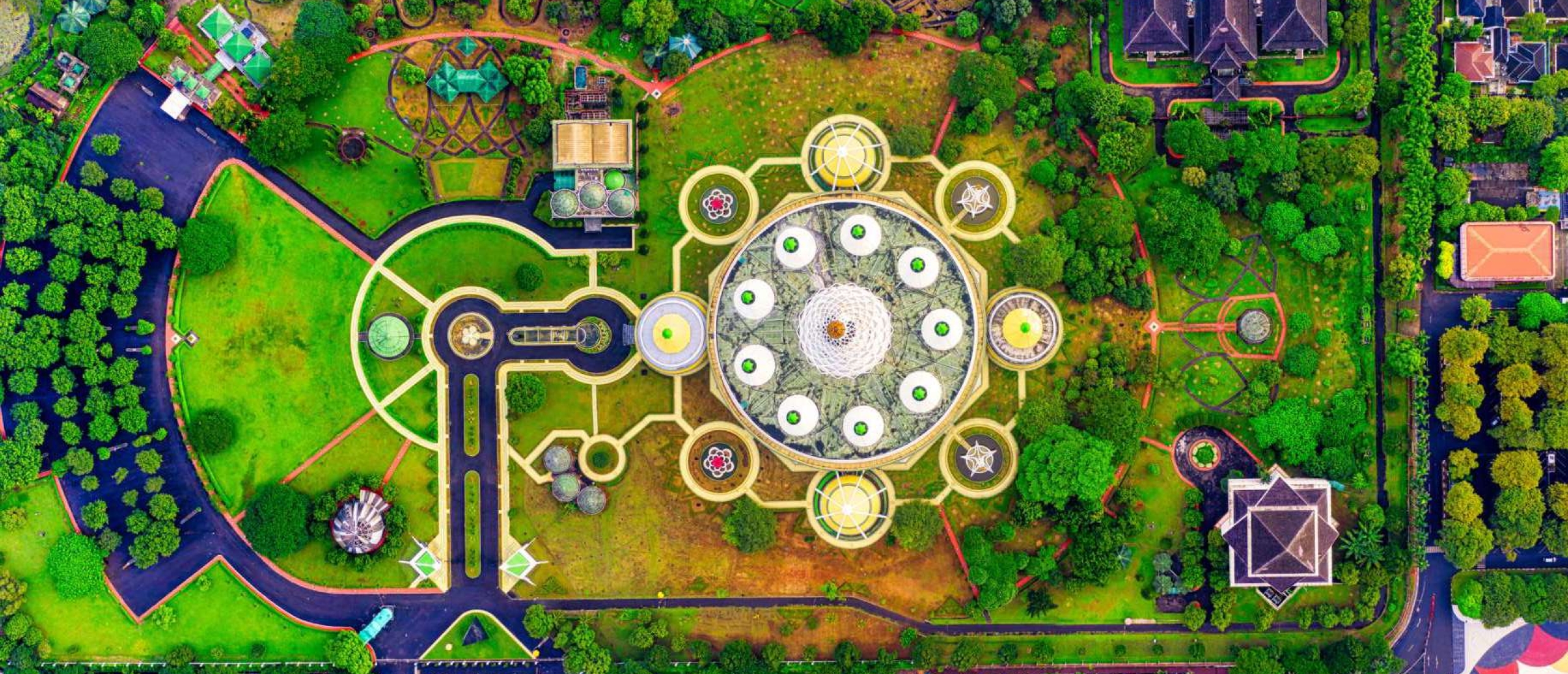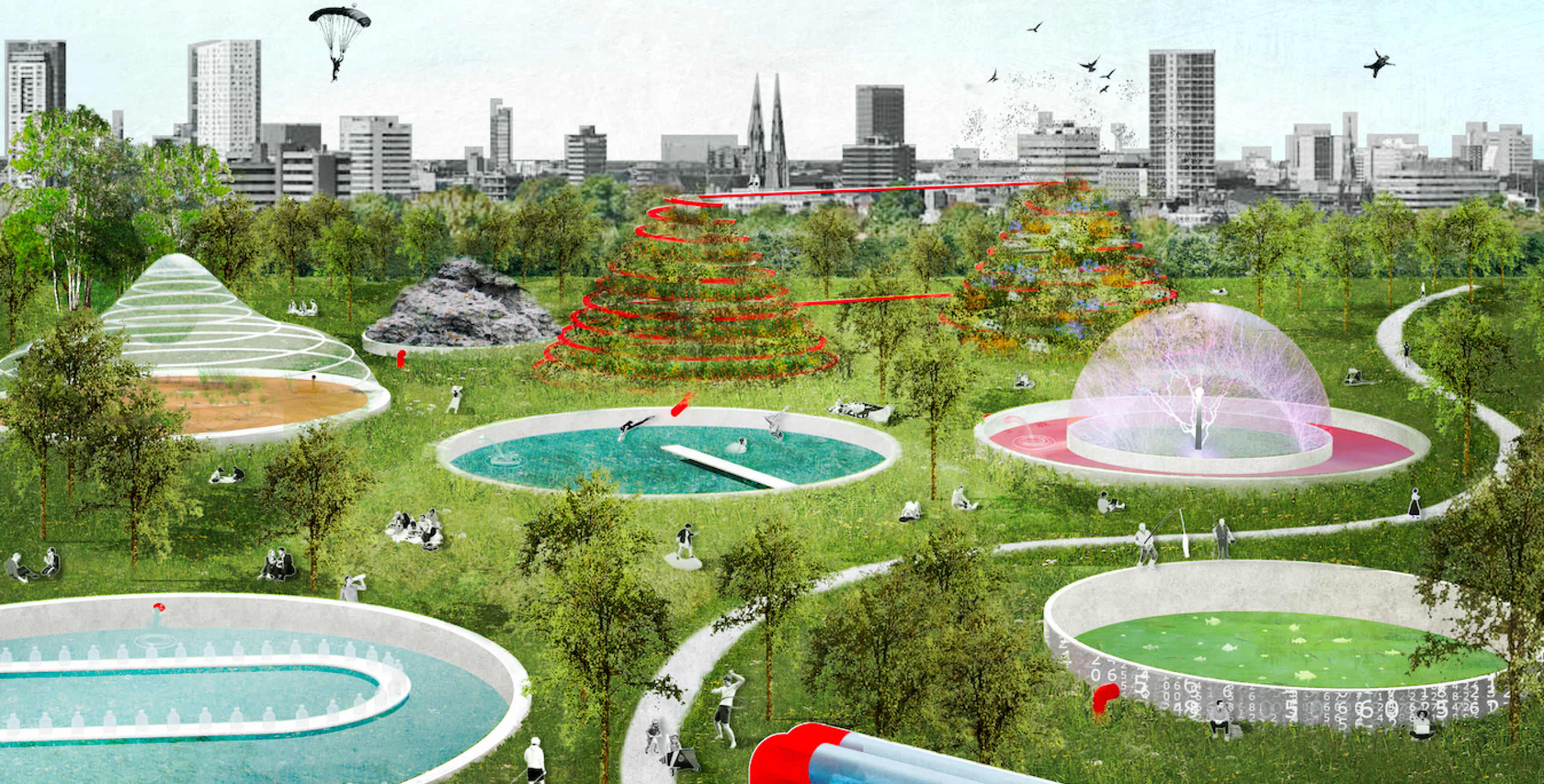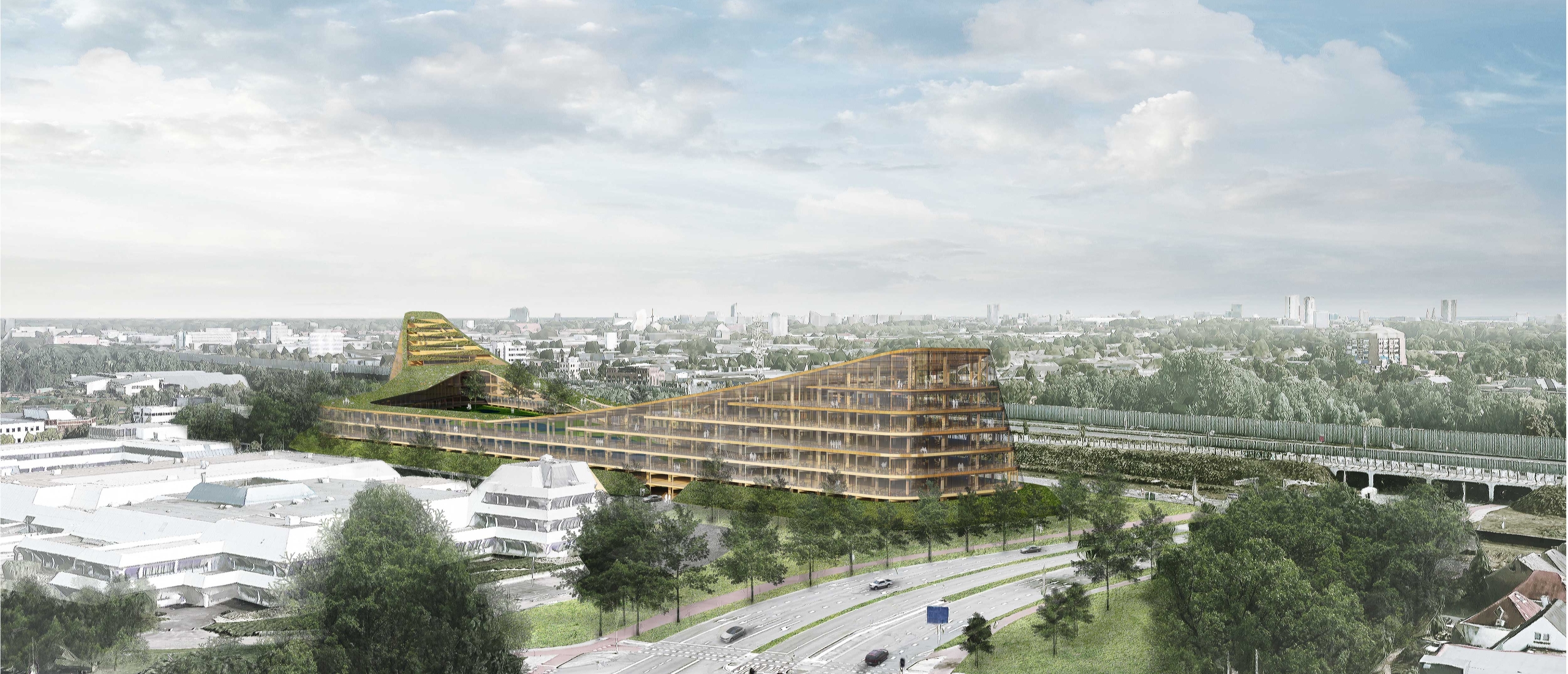
Bright Park
A spectacular collection of scalable innovations in the classical form of a urban park.
Read moreWHAT
To meet the demands of modern society and climate control in an inspiring way BRAND The Urban Agency and BLOC jointly developed the concept of the park of the future. This ‘super park’ is the most sustainable and circular park in the world, the smartest kid in class. In order to realise the park, we are working together with a collective of innovative scale-ups, residents, local government and the private sector. The park will unite and link exciting and groundbreaking innovations in urban and green technology into an experience for a city’s residents. In effect, this would mean features such as an active air and water purifier, or an on-site energy production facility. In essence, it will amplify the functions of a ‘normal’ park in an exponential manner. Furthermore, the park is a high-quality addition to the city’s public spaces, offering an enjoyable environment for all and triggering a certain curiosity among both residents and visitors.The first park will be realised in Eindhoven, The Netherlands. The city is a widely known hub of technology and innovation, making it the perfect place for the park to make its debut. After this initial location, the park will be duplicated and modified in cities around the world. The park consists of a number of modules that can be connected and possibly exchanged with other locations. The modular manner of building enables different types of technologies to be integrated in the concept: either online or offline, high-tech or low-tech innovations in the building, environmental, energy, food and water sectors. Possibilities include a water-producing fountain, a sea salt pavilion, a CO2-absorbing pond, solar cycle lanes, an ecological escape room and a water-purifying pool. The intelligent circular system that is the result of linking and integrating numerous innovations in a modular smart grid, offers a wealth of valuable data that can be utilised for different ends.
The modular approach also allows the park to grow and develop itself further.
Why
Numerous technological innovations are underutilised as a result of a knowledge gap between technology and society. The park enables innovations to be experienced first-hand by society in a familiar environment, thereby creating more awareness of the possibilities of technology and offering technological products for home use.
The issue of climate change is becoming ever more pressing, urging city regions around the world to come up with solid and innovative solutions for the environmental challenges they are facing. Last year’s Paris Agreement is an important milestone in the process of converting to a more sustainable way of living, prompting authorities on the national and local levels to act strategically. On the urban level, this translates into challenges concerning health, climate mitigation, food production, energy provision and the availability of water. The issues appear to be so grand that it’s hard to determine where to begin. It is essential to include society in the process, encouraging them to be involved in choices to be made and to change their behaviour and their routines. At this point, however, the Paris Agreement is still quite abstract to many people, leading to a relatively passive attitude.
At the same time, technology is moving forward in a revolutionary way. Robotics and the Internet of Things are prominent in modern technology, but also when it comes to sustainability incredible progress is made. There is a range of proven, scalable technologies and innovations that offer hyper efficient solutions for the city of the future: concepts with an exponential nature that have a real impact on the city and the challenges it is facing with regard to energy, food, and water. So far, though, they have remained virtually hidden from the outside world and everyday reality, unable to make a valuable impact.
The park aims to address the gap between these parallel movements. The available innovations can strongly contribute to a more sustainable future for the city, and for the world for that matter. The world needs to know about these solutions, and that is why they need to be made visible and tangible for people. Real behavioural change will only happen when city residents can experience the possibilities of these technologies first-hand. To this end, the concept of the park was developed, getting the available technologies off the shelves and presenting them in an accessible way in a familiar environment, thereby creating awareness and stimulating visitors to take matters in their own hands and contribute to a better future.
Design: Lola Landscape Architects




